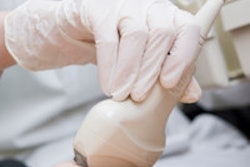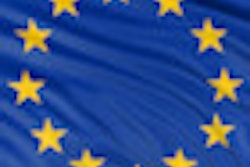
Few radiologists seem to know a great deal about the Union Européenne des Médecins-Spécialistes (UEMS, the European Union of Medical Specialists), but it's playing an important role in medical education and continuing professional development of doctors. In this interview, AuntMinnieEurope.com's editorial adviser Dr. Christiane Nyhsen speaks with Dr. Remy Demuth, president of the UEMS' radiology section.
Nyhsen: When was UEMS established and what are its aims?
Demuth: UEMS stands for "Union Européenne des Médecins-Spécialistes" -- the European Union of Medical Specialists. It is very old in comparison with most societies. It was founded in 1958, just one year after the Treaty of Rome, which led the way to the European Union as we know it today. Initial members were Belgium, France, Germany, Italy, Luxembourg, and the Netherlands -- nowadays 34 countries are represented. With delegates from individual national member associations, it is the official political representative organization for all medical specialists practicing in Europe.
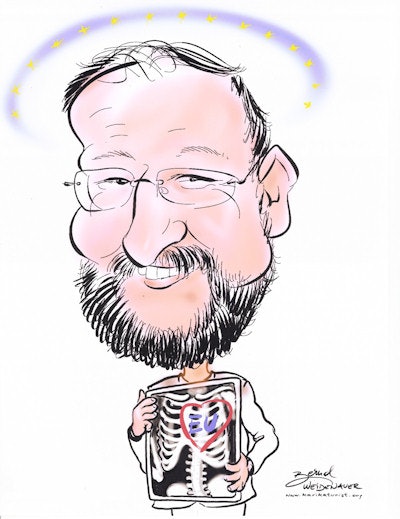 Dr. Remy Demuth is a radiologist at the Centre Hospitalier Emile Mayrisch in Dudelange, Luxembourg.
Dr. Remy Demuth is a radiologist at the Centre Hospitalier Emile Mayrisch in Dudelange, Luxembourg.The UEMS' main aims are international professional multidisciplinary cooperation and representation, and fostering harmonization of training by setting defined standards in officially endorsed training curricula (which are developed in cooperation with scientific societies), thereby improving medical care provided and allowing free migration of specialists inside Europe. Proposals and surveys by UEMS have inspired European directives such as the Directive 2005/36/EC on the recognition of professional qualifications in 2007.
I understand that UEMS has specialist sections for all different medical specialties. What does the radiology section do? What is the difference to other societies like the European Society of Radiology (ESR)?
The multidisciplinary national societies -- like the BMA [British Medical Association] or the FNOMCeO [Italian Order of Doctors] -- form the UEMS. The need for specialist representation became evident early in the formation of UEMS. Radiology was formed as a separate section, another one is nuclear medicine. Sections may have further subspecialist groups called "divisions," like the neuroradiology and interventional radiology divisions. However, the divisions are part of the radiology section and the radiology section is fully integrated in the wider UEMS cooperation. This is one of the main strengths of UEMS: all specialties work together, regularly meet up, and discuss common professional interests -- like for example the free movement of specialists within Europe and their regulation -- or issues that concern more than one specialty. This double level of organization also ensures a self-controlled limitation to all "extremism," both nationality and specialty-related.
One of the other main differences of UEMS versus big societies like the ESR is the fact that UEMS is a very lean one (i.e. poor!); the fees from national societies are our only income. It does not have the big ESR offices and meticulously well-functioning organizational body behind it. However, this means financial independence, which is a very important fact enhancing credibility amongst political stakeholders.
The radiology section has just approved the revised Radiology Training Curriculum, with its newest version developed by the ESR; after this it was adapted to the homogeneous UEMS template. Ethical issues are discussed (e.g., live demonstrations), and the radiology section has direct input into the accreditation of CME points for radiology conferences/meetings (so-called live educational events, LEEs).
How does the UEMS radiology section interact with the ESR and also with nuclear medicine and other organizations?
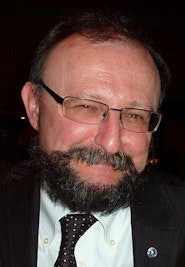 The UEMS' financial independence from the pharmaceutical industry is a major strength, according to Dr. Remy Demuth.
The UEMS' financial independence from the pharmaceutical industry is a major strength, according to Dr. Remy Demuth.The UEMS radiology section is in continuous contact with the ESR. One example is the European Training Assessment Program (ETAP), established as a joint initiative between the UEMS Radiology Section and the European Association of Radiology (now ESR) in 2001, an initiative still active today. There is mutual attendance of UEMS and POC (Professional Organization Committee) meetings as well as other ad hoc discussions. UEMS has recently approved the updated European Training Curriculum in Radiology (see above), and also supports the European Diploma in Radiology. "Alliance for MRI" has been supported, not only by the UEMS radiology section, but by the UEMS as a whole, adding significant weight and securing a successful outcome. The ESR has also been invited to participate in other UEMS meetings, such as the Council for European Specialist Medical Assessments (CESMA), as interdisciplinary platform on assessment.
Currently, closer collaboration with the section of nuclear medicine is being explored, in particular with a view to developing strong common interests in PET/CT-MRI and molecular imaging. Links to other sections are also being considered.
The UEMS undertakes CME accreditation -- how is this done? Why is it important and why should it be done by UEMS and not another organization?
The European Accreditation Council for Continuous Medical Education (EACCME) has defined (consensus-based) criteria for the accreditation of LEEs (i.e., conferences and courses), which have had up-to-date and more detailed criteria since 2012 and also encompass e-learning materials.
Parallel double evaluation takes place by the UEMS specialty concerned as well as the National Accreditation Authority where the event will take place, which guarantees a process as objective, impartial, equal, and transparent as possible.
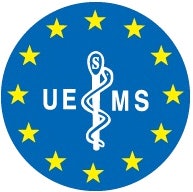 UEMS logo.
UEMS logo.Financial independence from the technical and pharmaceutical industry is essential as any sponsorship received may raise the suspicion of a biased evaluation of CME events. The fact that UEMS is undoubtedly free of such influences ensured mutual recognition with the American Medical Association and the Canadian partner organization, giving transatlantic accreditation to the attendants of learning events if they are UEMS CME approved.
How can we find more information about UEMS?
The official UEMS website is www.uems.net, which is awaiting integration into the new UEMS server. The radiology section can be found under www.uemsradiology.eu. Regarding CME accreditation, further summaries are available from the EACCME-EPOS poster at ECR 2014, please click here.
Editor's note: Special thanks is extended to Dr. Miraude Adriaensen for her help with this article.




